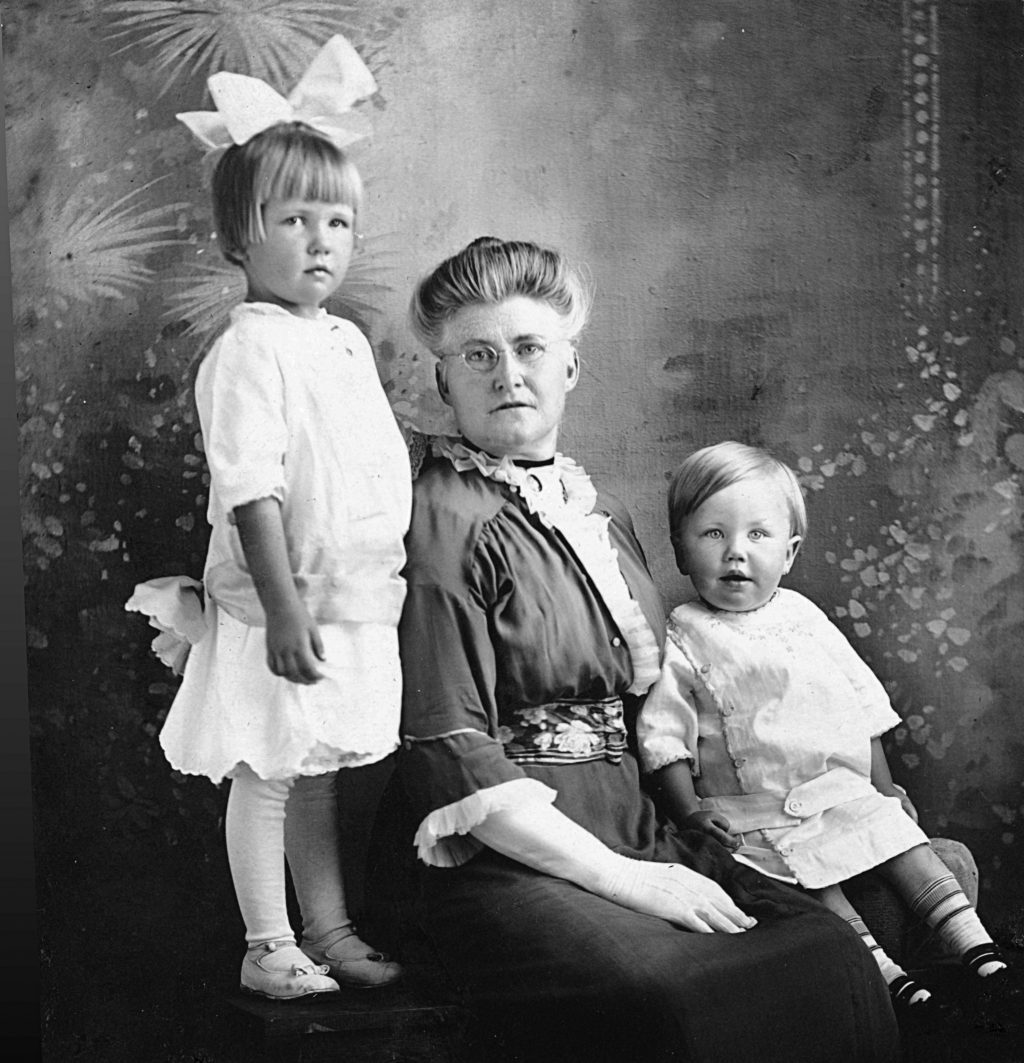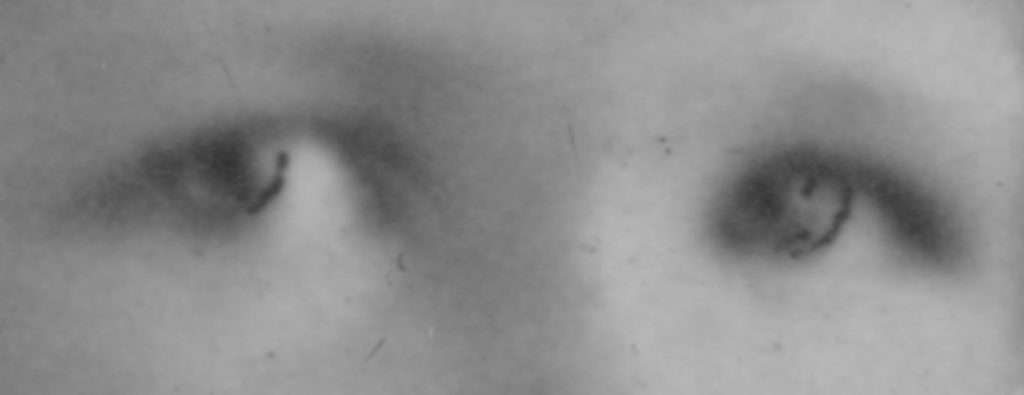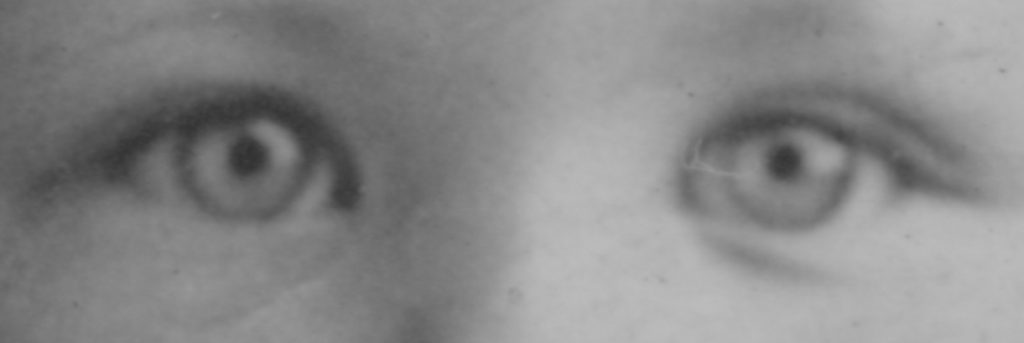This is a studio portrait (as I imagine you can tell) of Great Grandma Hammell with the two grandchildren she had at the time (about 1914).

Mom is on the left and Uncle Barney is on the right, as many of you already know.
When I first looked at Great Grandma’s hand in this photo, the fingers looked strange to me. When I looked closer, I realized she was wearing a sheer glove. I suppose that was the fashion at the time.
It appears this photo was taken during the same studio session as this one posted some time ago (click/tap to view). At the time I posted the earlier photo, I must admit I didn’t realize it was a studio photo, though I should have. That explains the nice lighting in that photo.
You may notice (especially if you tap/click on the above image to see the larger version) a long, narrow triangle of mostly solid gray along the left edge of the image. This photo was cropped with scissors before it was put in Mom’s album. The cut along the left edge was not quite vertical. For aesthetic reasons I wanted to retain the width of the print as it was at the top, which left a triangular gap down the left edge. I filled the gap with gray color so it would blend in with the rest of the photo. In case you noticed and were wondering…
Here is something interesting. (Well, I think so anyway.) In our modern digital age we have “photoshopping.” Before that, photos were “retouched.” But even back in 1914, photo studios had little tricks to make their photos look better.
Here is one tiny (literally!) example that I happened to notice on the above print. This is a closeup of Mom’s eyes:

And Great Grandma Hammell’s eyes:

Those dark marks on and around the irises of the eyes are not dirt. To understand what is going on here, you need to know about the “limbal ring.” (No, I didn’t know either.) I quote from the Wikipedia article on limbal ring (which has a couple of helpful illustrations, too):
“A limbal ring is a dark ring around the iris of the eye. … It has been suggested that limbal ring thickness may correlate with health or youthfulness and may contribute to facial attractiveness.” (italics mine)
Evidently this is something that was known even in 1914. To give the irises of the photographic subject’s eyes a little extra definition and appeal, the studio would do something to the negative to create the dark lines you see above along the edge of the light side of the iris. I’m guessing they put fine scratches in the negative but I don’t know for sure. It seems like it would be impractical to apply these lines directly to each individual print, but maybe. Either way, you see that the resulting lines on the print are almost microscopic. Imagine creating them accurately! (Or at least with sufficient accuracy—you can see in the close-up above that the lines actually missed the edges of Great Grandma Hammell’s irises by a bit.) And all that to leave a line you can’t see directly (except with a magnifying glass)! Yet it makes the subject’s eyes stand out, which makes for a more appealing photo, which means you’ll buy it from the studio. It seems like it would have been a lot easier if they’d just used Photoshop! ;–)
In contrast (no pun intended), Uncle Barney’s eyes were left untouched:

Perhaps no “enhancement” was deemed necessary because his irises already had fairly prominent limbal rings that were not washed out by the reflection of the studio lights. Or maybe they were just too small to try to touch up.
The professional photographers in the audience may feel free to correct me on any of the above.